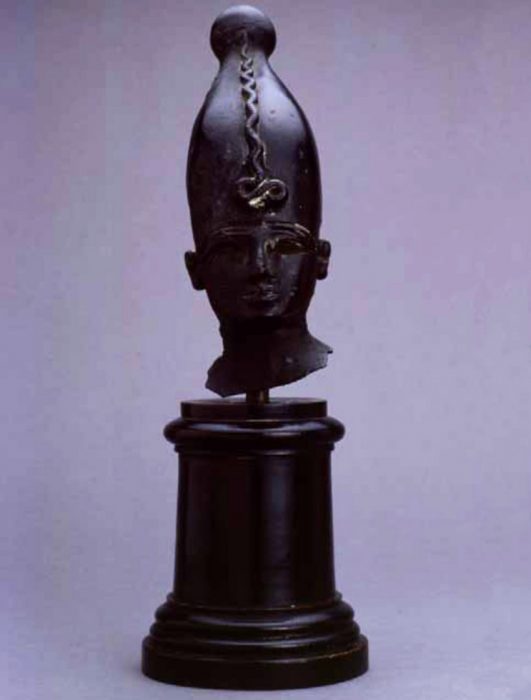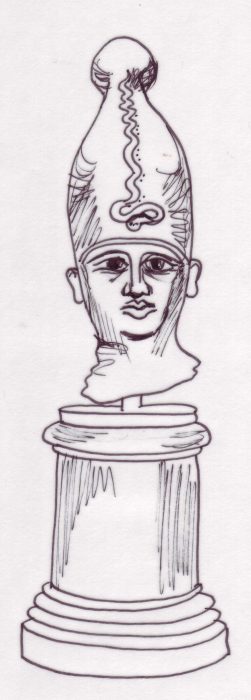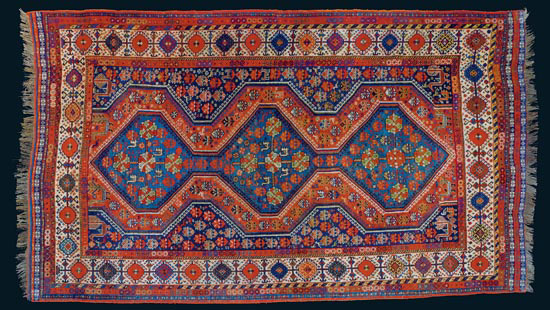Freud’s Osiris
This painting of the head of Osiris is one of my twelve smaller gilded paintings which together form Significantly Freud: Icons for a Jewish Atheist, representing my favourite twelve artefacts from the private collection of Sigmund Freud.
Osiris was one of the oldest gods in recorded history, King of the Land of the Dead, with an important role in the Weighing of the Heart Ceremony and judging the deeds of the dead. The ancient Egyptians also believed he had given them the gift of barley, an important crop. He married his sister, Isis, but was later murdered by his brother, Seth, who cut his body into many pieces and scattered them all over Egypt. Isis eventually found all the parts and with the help of Anubis brought Osiris back to life. He was Egypt’s most popular deity, beloved because he combined the roles of god, man and saviour.

Die Barmherzigkeit (Mercy)
The painted red script, Die Barmherzigkeit, translates as “Mercy”. This signifies Freud’s obsession with death rituals and the role Osiris played in judging the deeds of humans.

Freud’s Osiris head was once part of a full-size, hollow cast bronze statue probably presented at a temple by a wealthy worshipper. It was from the Third Intermediate Period in Egypt made of bronze and about 180 mm high. The crown is decorated with a sacred cobra. Osiris’s eyes would once have had precious stone inlays and he is also missing his beard and part of his crown. The head also shows signs of scratches from the original grave robbers.
This head was a favourite part of Freud’s collection, in pride of place on his desk. Osiris’s connection with the life cycle made him of special interest to Freud, who was deeply fascinated with the Egyptian beliefs about life and death.

One of my original sketches for this painting.
Egyptian art forms the bulk of Freud’s collection. He began collecting art in 1896 after the death of his father and was intrigued by their rituals for rebirth. The Egyptian items in his collection symbolically chart a preoccupation with mourning. Freud described mourning as work. (Janine Burke)

The colour of the frame and desktop in this painting was inspired by the green velvet chair in Frued’s consulting room and also the subtle green in part of the tribal rug design.